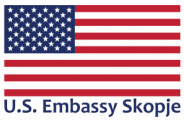Among the endless possibilities in the Internet space, the possibilities for manipulation, spreading lies and hatred and putting them into operation for further political backdrops, seem endless. Although fake news and hatred are tools used throughout political history, in the digital age these opportunities, along with the dangers that arise from them, are multiplied and brought to a completely different level.
In the recent years we have witnessed the implementation of obscure strategies that, through the pervasive and dangerous abuse of the Internet media, are affecting democracies themselves and endangering the democratic processes and mechanisms. No less serious are the strikes on the internal cohesion of societies through conductive polarization – activation and exploitation of emotionally charged topics, stories and events. The social media are the main avenue for hate, and misinformation posted online and spread across networks – fuel for hatred and maintenance. One such case will long remain in our collective memory – the months-long trumpeting about the “Tirana Platform” and the fake news in that context, which has repeatedly warmed people to protests, eventually escalating into the senseless violence of April 27th.
A recent study by Miller and Schwarz clearly demonstrates the link between hate speech on social media and real-world violence. The authors used a specific methodology to test certain cause-and-effect conclusions about how the anti-refugee activity on the social networks on the Alternative for Germany (AfD) Facebook page turns into actual violent acts against refugees. Their conclusion is that anti-refugee hate crimes are increasing in areas of greater use of Facebook during periods of heightened negative sentiment against the refugees over the Internet. “This effect is particularly emphasized through violent incidents against the refugees, such as arson and attacks. This points to the role of the social media in spreading the anti-refugee sentiment throughout Germany. ”
Such studies are not numerous, given that the phenomenon of online hatred, which erupted in parallel with the development of Internet communication, is relatively new. There is still no comprehensive study also in our country that would confirm and explain the direct correlation between hate speech and deeds, but the available data lead to conclusions that are in line with the aforementioned study.
From the analyzed data from the Helsinki Committee for Human Rights, it is obvious that hate speech produces acts of hatred. This is especially true for the basics of ethnicity and political affiliation. Monitoring the situation with hate speech in North Macedonia by the Helsinki Committee shows that ethnicity, as the basis for such speech, dominates all other categories. On the other hand, hate crime monitoring shows an increasing trend in the number of such offenses, with an alarming number of incidents on ethnic grounds. It reaches 64% of all registered cases in 2018. Almost all occurred between members of the Macedonian and Albanian ethnic communities.
The youngest ones are the most numerous victims and bullies
One of the most worrying facts is that the vast majority of victims and perpetrators of hate crimes are the minors. Last year’s reports showed that a significant 36% of the victims were under 18, and there were incidents where the victims were 12-13 years old. Also in the other cases, most of the victims are young. The number of juvenile perpetrators of hate crimes is also not negligible, so out of a total of 319 registered perpetrators, 72 were juveniles. This is a serious indicator that tolerance among the young population is significantly reduced, especially among young people of different ethnic backgrounds.
Part of the reason for this extremely negative trend is almost certainly related to the internet communication. The social media are the primary source of information for young people, which means they are crucial in shaping their attitudes.
Reflecting on the impact of online hatred, the Canadian Center for Digital and Media Literacy highlights the radicalization of the youth as one of the most serious consequences. The search for personal identity and belonging as a natural urge in the adolescent years can easily be abused in this regard. Although belonging or admiring a particular hate group does not necessarily mean automatic radicalization of the individual, the tendency still leads to developing extreme positions, that is, the belief that violence against others is justified as an act of defending of their group. The use of the Internet has facilitated the creation of such “support networks” that heroize their most extreme and violent members, creating a platform for others to identify with them. The end result is visible in the black statistics.
The Sazdo case as a paradigm
The reporting and reactions to this tragedy reveal all the elements that make up the circle of hatred, lies, and violence. A circle that feeds itself. The case of the young fan, who was attacked and beaten by three of his Albanian peers and lost his life as a result of the injuries, was initially qualified as violence, and after the death of the injured boy was requalified as a cruel act. By doing so, the opportunity to market misinformation and emotional manipulation with the public was opened. According to some media articles, the murder was preceded by a Facebook debate (note: the original news that other media quoted was later deleted. Indicatively, links to many other news related to this case are no longer active). The attackers themselves, two of whom have already been convicted and the third one is on the run, were members of a football fan group. Although conflicts between fan groups are a “traditional” occurrence, with the development of the social media they have taken on a much wider field of accountability and hatred.
Discriminatory and fascist slogans once shouted only on the stadium stands and through graffiti, are now being marketed much wider and affecting far more recipients. And, as we have already mentioned, the main effects of online hate speech are the risk that those who regularly face it may be radicalized. Hate mobilizes and puts people in trenches that are difficult to get out of. Especially when it comes to interethnic issues and coexistence.
Hate speech sparked Sazdo’s killing. And this hate crime later caused further escalation of calls for violence, clashes and hatred of the other. And all this spiced up with fake news that fueled gasoline over the already fueled emotions.
The young fan Sazdovski died ten days after the attack and in the absence of official information, shortly after the event, more than enough space was created for the publication of speculation, fake news denying the speculations, and making analogies to Martin Neskovski’s case. The atmosphere was further fueled by articles that the MoI wanted to conceal the case and to avoid responsibility, to the tendentious allegations made during the trial that the perpetrators would be acquitted, old statements put in the context of the case, ??? headlines distorting what was said, sharing posts by Albanian fans, etc. The comments on the social networks escalated as expected.
The fake news feed the well-established narratives on a regular basis
Aside from the misinformation and lies directly related to the case mentioned, all actors who are daily feeding the great narratives in favor of the dehumanization and devaluation of the “Other” are guilty of every act of ethnic hatred. Narratives for great countries, narratives for pure nations, patriots and traitors, etc. are activated according to the needs of the political actors who benefit from them. The aforementioned enormous impact of Internet communication on building the world of young people facilitates the transgenerational transmission of such narratives. A special catalyst are the statements and speculations of public figures, politicians, athletes, and the like, who initiate violent reactions from their supporters. Much of the responsibility lies with the media, which is often abused in the race od acquiring more clicks as a conduit for fake news and hate speech.
The need for and methods of dealing with these phenomena is a hot topic worldwide, with democratic countries particularly concerned about the potential impact on freedom of speech if rigorous regulation is implemented. The potential for further radicalization under prohibition should not be overlooked. The dangers of “self-victimization” of the groups spreading hatred and misinformation can easily lead to deeper polarization and isolation in “echo bubbles” through the dark labyrinths of the global network, with an even darker effect in real life.
Pavlina Simonoska Arsikj
Communications Coordinator – Helsinki Committee for Human Rights


